Complete Guide to Fruit Gardening in 2025
Are you interested in starting your own fruit garden but don’t know where to begin? Many people face the challenge of choosing the right plants and understanding how to care for them. In fact, according to a 2025 study, nearly 60% of beginner gardeners struggle with soil quality and watering needs. If you’re facing similar issues, you’re not alone!
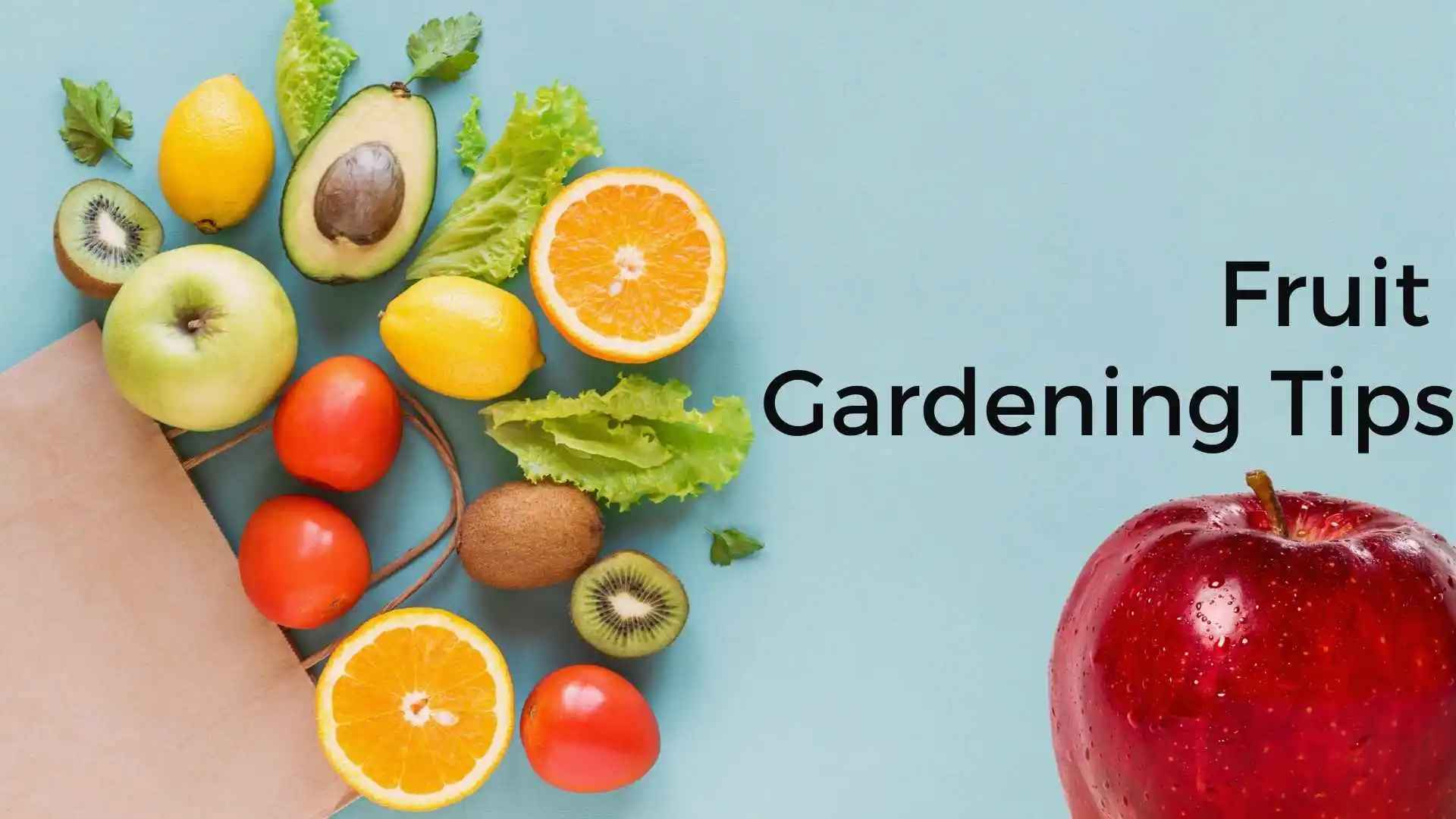
The good news is that fruit gardening is easier than you might think. By selecting the right varieties and following some basic maintenance steps, you can grow healthy, delicious fruits at home. Start by ensuring proper soil drainage and sunlight, and be mindful of pests that might threaten your plants. With a few expert tips, you’ll have your fruit garden thriving in no time.
If you want to learn how to grow flowers and explore their benefits then please visit Flower Gardening.
Why Grow Your Own Fruit Garden?
Growing your own fruit garden in 2025 has many benefits. Fresh fruits from your garden are free from chemicals, making them healthier. Studies show that homegrown fruits taste better than store-bought ones. Plus, it helps reduce your carbon footprint by cutting down on store-bought produce.
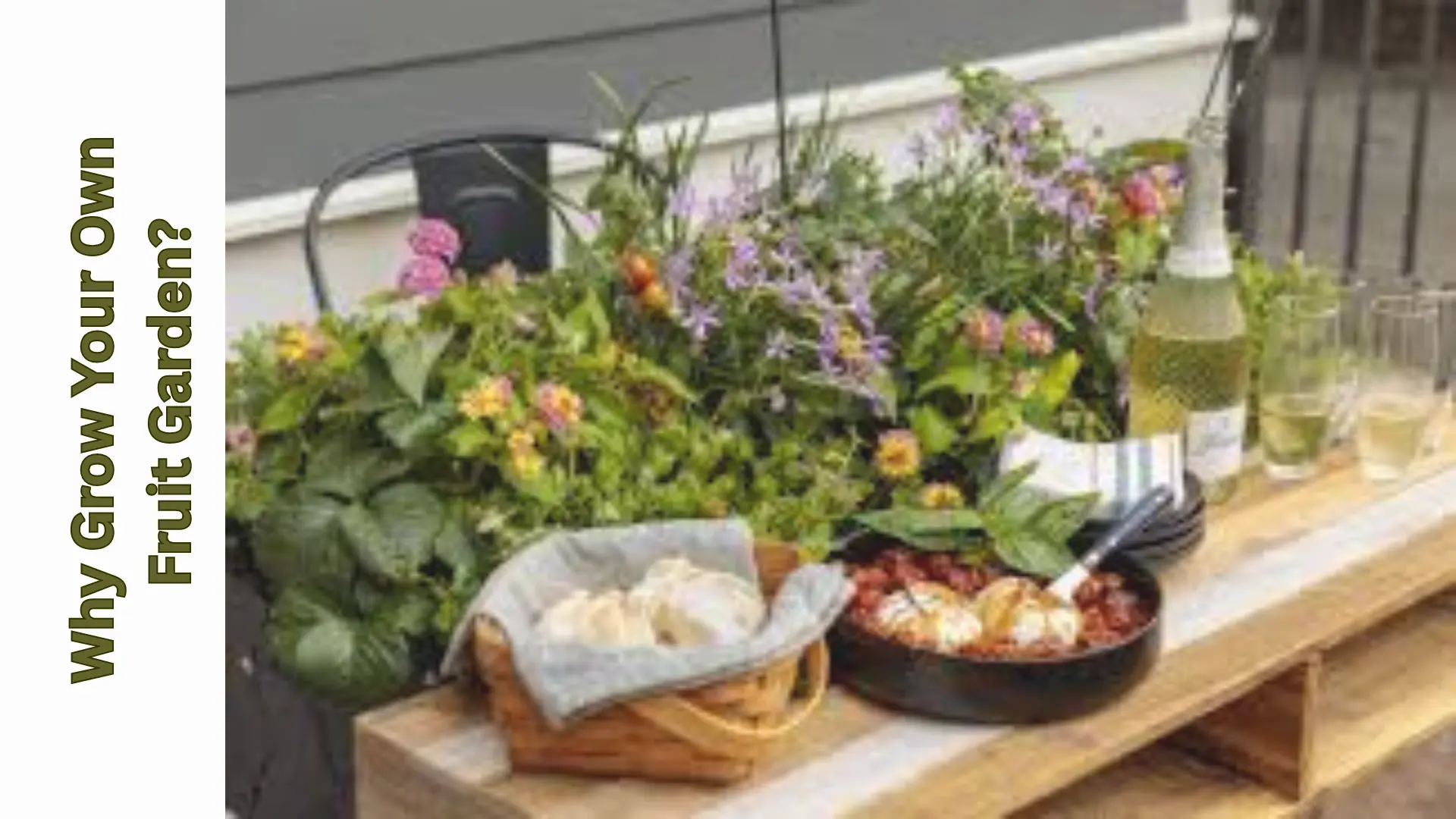
Gardening is also a relaxing activity. Many people find it helps reduce stress. When you grow your own fruits, you can enjoy them fresh and save money. It’s a fun way to try new varieties and flavors you won’t find in stores.
The Benefits of Growing Fresh Fruits at Home
Growing fresh fruits at home brings many rewards. First, homegrown fruits are healthier because they’re free from harmful chemicals. You can enjoy them knowing they’re grown naturally. Studies show that homegrown fruits also taste better and are more nutritious.
Another benefit is cost savings. Growing your own fruits reduces the need to buy expensive produce. Plus, it’s a fun and rewarding hobby that helps you connect with nature. Homegrown fruits can also be more sustainable, reducing waste and your carbon footprint.
| Benefit | Description | Impact |
|---|---|---|
| Healthier Produce | Homegrown fruits are free from pesticides and chemicals, offering a cleaner and healthier option. | Reduces exposure to harmful chemicals and improves nutrition. |
| Better Taste and Freshness | Freshly picked fruits taste better and are more flavorful than store-bought alternatives. | Improves eating experience and satisfaction. |
| Cost Savings | Growing your own fruits reduces the need to buy them from stores, saving money over time. | Long-term savings, especially for high-demand fruits. |
| Control Over Growing Practices | You have control over the growing environment, including soil, water, and organic care methods. | Ensures high-quality produce and sustainable practices. |
| Increased Vitamin Intake | Homegrown fruits are often picked at peak ripeness, preserving more vitamins and nutrients. | Enhances overall health by increasing vitamin intake. |
| Encourages Physical Activity | Gardening itself is a form of low-impact exercise, promoting physical health. | Helps improve fitness and reduce stress. |
| Sustainability | Growing your own fruits reduces the carbon footprint associated with transporting store-bought produce. | Contributes to environmental sustainability and reduces waste. |
| Educational Experience | Growing fruits teaches valuable skills and knowledge about nature, plants, and sustainability. | Great for families, children, and beginners in gardening. |
How Fruit Gardening Contributes to Sustainability
Fruit gardening plays a key role in sustainability. By growing your own fruits, you reduce the need for store-bought produce, which often involves heavy packaging and transportation. This cuts down on waste and lowers your carbon footprint. In fact, growing your own food can help reduce environmental impact significantly.
Additionally, home fruit gardens help conserve water and soil. Using natural gardening methods reduces the need for harmful chemicals. You also contribute to local biodiversity by creating habitats for pollinators like bees and butterflies, which are vital for a healthy ecosystem.
Getting Started with Fruit Gardening
Starting a fruit garden is easier than you think. First, you need to choose the right fruit varieties for your climate and space. Consider factors like sunlight, soil type, and temperature before planting. Choosing the right fruits ensures a healthy, productive garden.
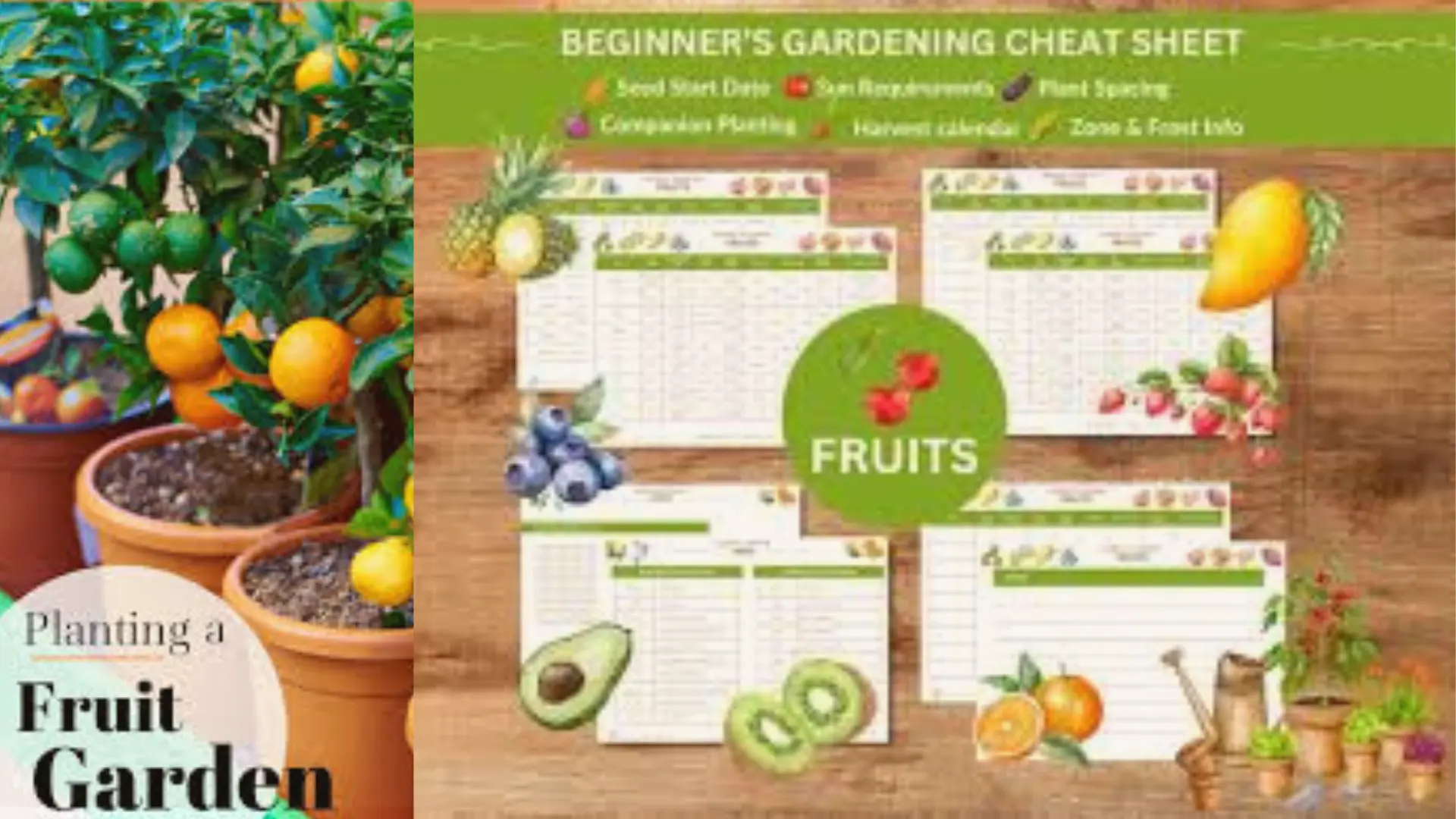
Next, gather the necessary tools. You’ll need basic gardening supplies like a shovel, watering can, and pruning shears. Preparing your garden space with proper soil and drainage will set you up for success. With the right preparation, you’ll be on your way to growing fresh fruit at home.
Best Fruit Varieties for Beginner Gardeners
For beginner gardeners, it’s best to start with easy-to-grow fruit varieties. Apples, strawberries, and raspberries are great choices. These fruits are hardy and can thrive in most climates with minimal care. They also produce a good yield, making them rewarding for new gardeners.
If you have limited space, try growing dwarf fruit trees like small apple or peach trees. These varieties are perfect for small gardens or even containers. Starting with these simple fruits will give you a successful fruit gardening experience without overwhelming you.
| Fruit | Best for Beginners | Climate | Price (per tree) |
|---|---|---|---|
| Apple | Yes | Temperate, Subtropical | $25 – $60 |
| Strawberry | Yes | Mild, Temperate | $10 – $20 |
| Peach | Yes | Warm, Temperate | $30 – $50 |
| Raspberry | Yes | Cool, Temperate | $15 – $25 |
| Fig | Yes | Warm, Mediterranean | $40 – $75 |
Essential Tools for Fruit Gardening Success
To ensure success in your fruit garden, a few basic tools are essential. A sturdy shovel helps with digging and planting, while a watering can ensure your plants stay hydrated. Pruning shears are important for trimming branches and encouraging healthy growth.
Additionally, a garden rake helps with clearing debris and leveling the soil. Investing in these simple tools will make your gardening tasks easier and more efficient. With the right tools, you’ll set yourself up for a bountiful fruit garden.
| Tool | Purpose | Price Range |
|---|---|---|
| Pruning Shears | Pruning trees and shrubs | $15 – $40 |
| Watering Can | Watering plants effectively | $10 – $25 |
| Soil Test Kit | Checking soil pH and nutrients | $15 – $30 |
| Shovel | Digging holes for planting | $15 – $50 |
| Garden Fork | Loosening and aerating soil | $20 – $45 |
Choosing the Right Location for Your Fruit Garden
Selecting the perfect location is crucial for a successful fruit garden. Fruit trees need plenty of sunlight, so choose a spot that receives at least 6-8 hours of sunlight daily. A sunny location helps the plants grow strong and produce sweet fruits.
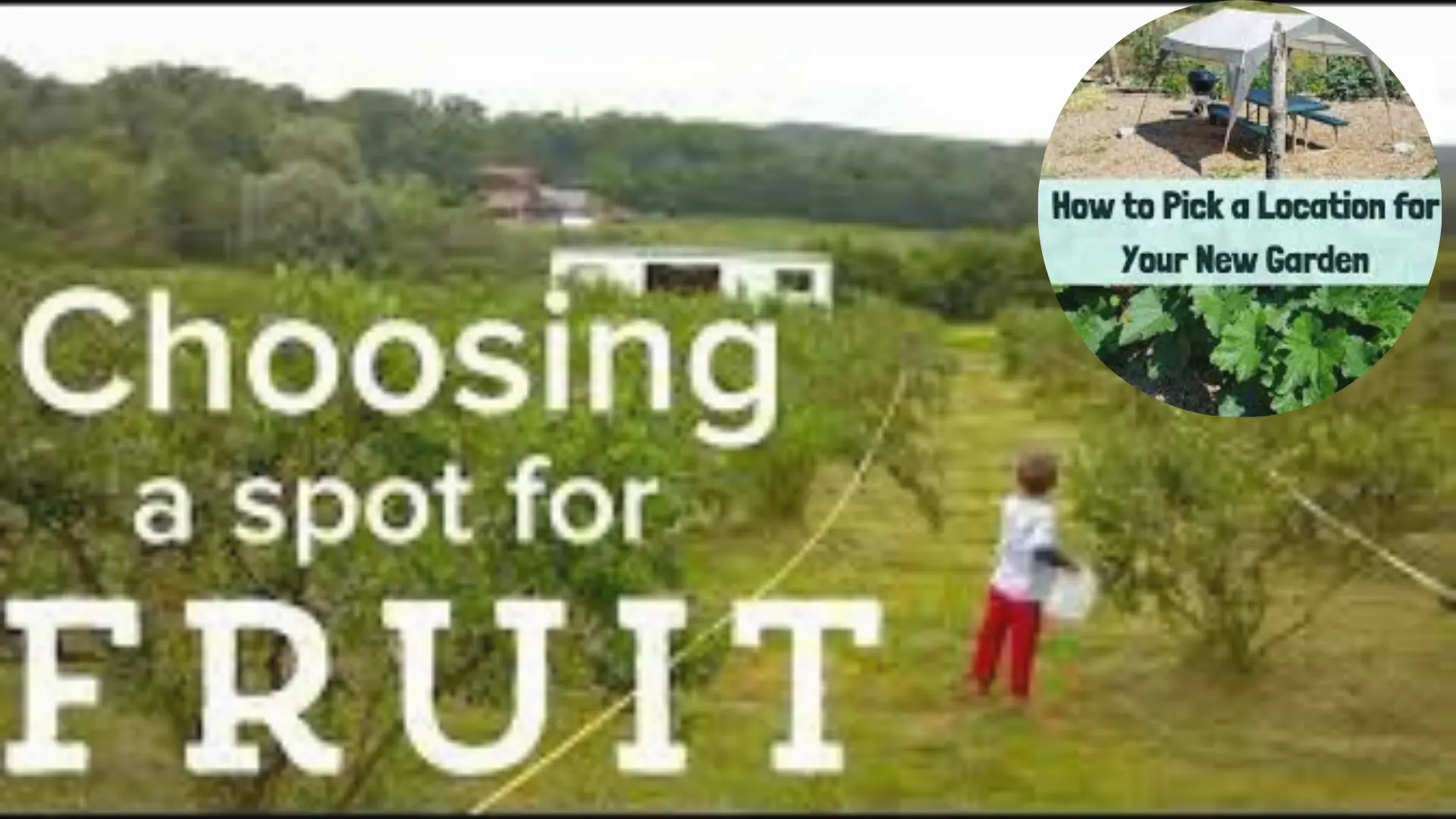
Also, make sure the soil drains well. Poor drainage can lead to root rot and other issues. It’s best to avoid areas where water tends to pool. By picking the right spot with good sunlight and proper drainage, your fruit garden will have the best chance to thrive.
How to Select the Perfect Spot for Fruit Trees
When selecting a spot for fruit trees, sunlight is key. Choose a location that gets at least 6 hours of direct sunlight each day. This will ensure your trees get enough energy to grow and produce fruit.
Also, check the soil drainage. Fruit trees need well-draining soil to prevent root rot. Avoid low areas where water collects. Lastly, make sure the spot is sheltered from strong winds to protect young trees from damage.
Understanding Soil Requirements for Fruit Crops
Soil quality is essential for healthy fruit crops. Fruit trees prefer well-drained, loamy soil with a slightly acidic to neutral pH. You can test your soil to see if it needs adjustments, like adding compost or organic matter to improve texture and nutrients.
Good soil helps the roots grow strong and absorb the necessary minerals. It’s also important to ensure the soil is not too compacted, as this can prevent proper root development. By understanding your soil’s needs and making the right adjustments, you can create the perfect foundation for your fruit trees.
Planting Your First Fruit Tree
Planting your first fruit tree is an exciting step in gardening. Start by digging a hole that’s twice as wide as the tree’s root ball but only as deep as the roots. This will give the roots plenty of room to spread and grow. Make sure the tree is level with the surrounding soil to avoid root problems.
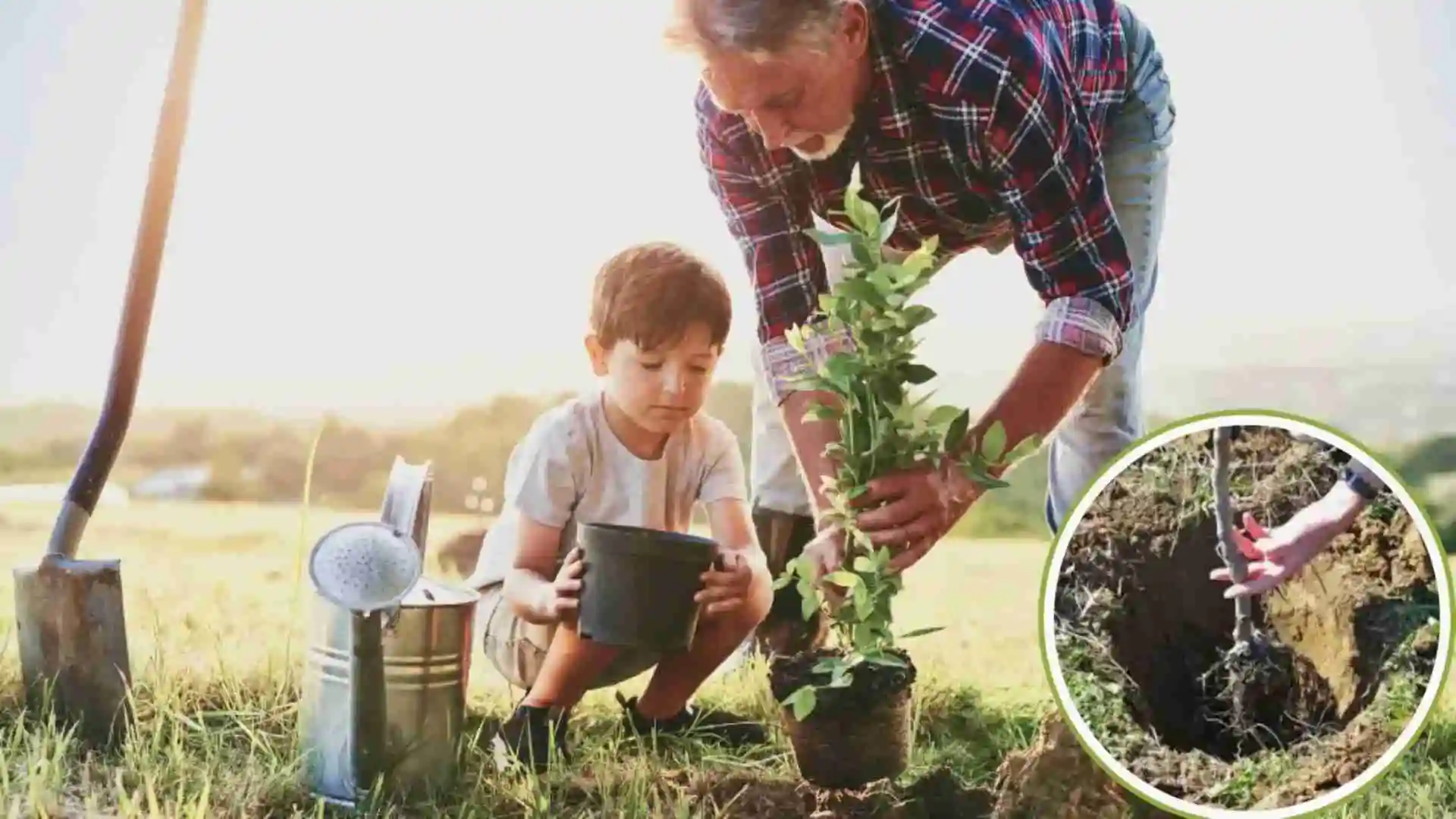
Next, carefully place the tree in the hole and backfill it with soil, gently pressing down to eliminate air pockets. Water the tree well after planting to help settle the soil around the roots. With proper planting, your tree will have a strong start and be on its way to thriving.
Step by Step Guide to Planting Fruit Trees
Planting fruit trees is easy when you follow these simple steps. First, dig a hole that’s about twice as wide as the root ball of the tree. The hole should be deep enough to allow the roots to spread without bending.
Next, place the tree gently into the hole, ensuring that the root collar (the base of the trunk) is level with the soil. Fill the hole with soil, patting it down lightly to remove air pockets. Water the tree thoroughly to settle the soil and help the roots establish.
Finally, add mulch around the base of the tree to retain moisture and protect the roots. With these easy steps, your fruit tree will be well on its way to growing strong and healthy.
Common Mistakes to Avoid When Planting Fruit Trees
Planting fruit trees can be tricky, but avoiding a few common mistakes can make all the difference. One mistake is planting the tree too deep. The root collar should be level with the soil, not buried. Planting too deep can cause the roots to suffocate and hinder growth.
Another mistake is poor soil preparation. Make sure to loosen the soil before planting to allow the roots to grow freely. Also, don’t forget to water the tree immediately after planting, as this helps settle the soil and supports root development. Avoiding these mistakes will set your fruit tree up for long-term success.
Maintaining Your Fruit Garden for Healthy Growth
Maintaining your fruit garden is key to a successful harvest. Regular watering is important, especially during dry periods. Be sure to water deeply at the base of the plants rather than just spraying the surface. This encourages strong root growth and helps the plants thrive.
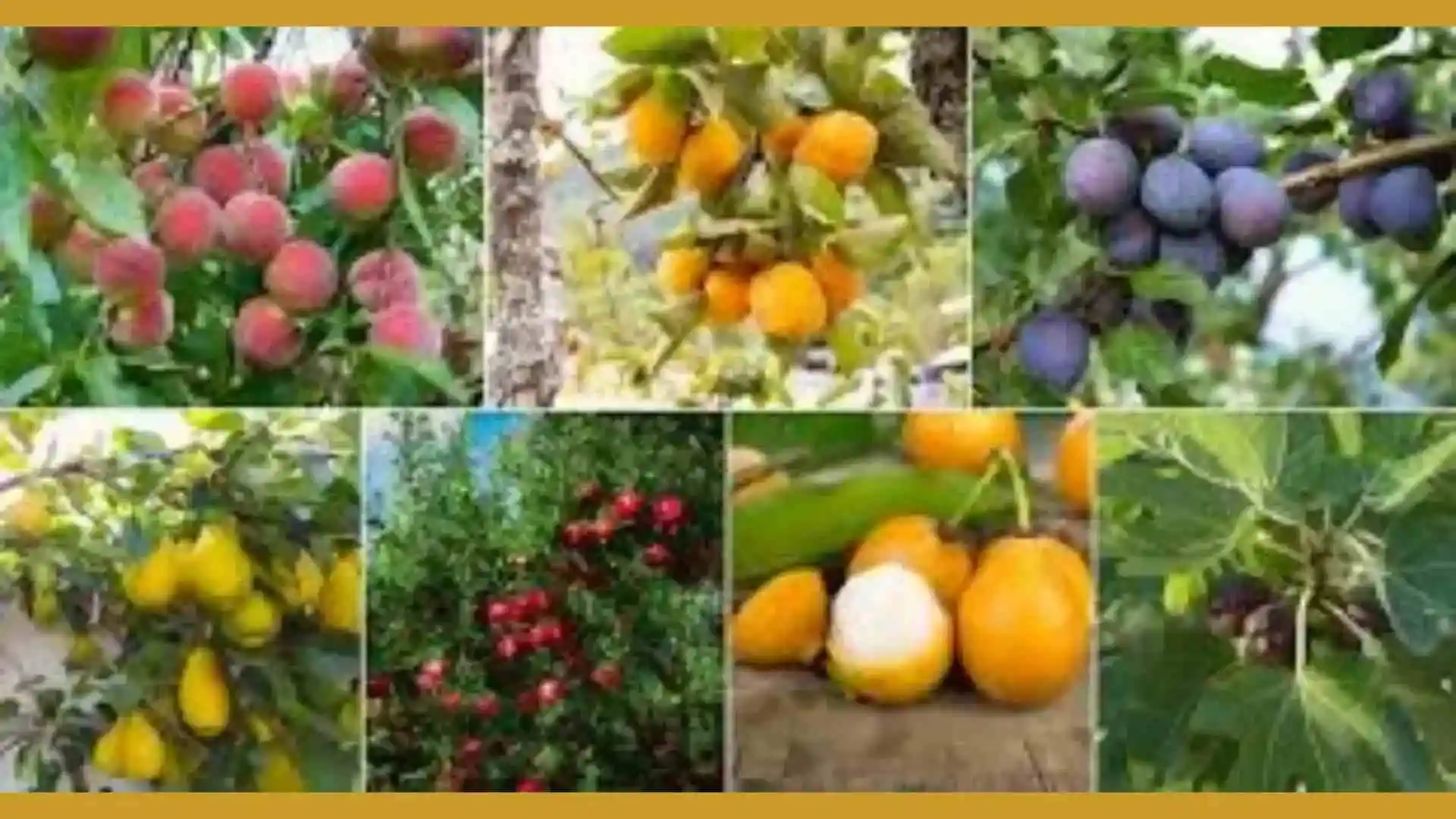
Pruning is another essential task. Trim dead or damaged branches to improve air circulation and allow sunlight to reach the inner parts of the tree. Mulching around the base can also help retain moisture and suppress weeds. With consistent care, your fruit garden will grow healthy and productive.
| Tool | Use | Price Range |
|---|---|---|
| Mulch | Retains moisture and keeps weeds away | $5 – $25 per bag |
| Fertilizer | Provides nutrients for growth and fruit production | $10 – $30 per bag |
| Spray Bottle | For applying pest repellents or fertilizers | $5 – $15 |
Pruning Tips for Stronger, Healthier Fruit Trees
Pruning is essential for healthy fruit trees. Start by removing any dead, damaged, or diseased branches. This will allow the tree to focus its energy on healthy growth. Pruning also helps improve air circulation and sunlight exposure, which is important for fruit production.
Trim the tree to shape it and encourage strong, balanced growth. Always use sharp pruning shears to avoid damaging the tree. Aim to prune in late winter or early spring, before the tree starts its new growth cycle. Regular pruning will result in stronger, healthier trees that produce better fruit.
Irrigation and Watering Techniques for Fruit Plants
Proper watering is key to the health of your fruit plants. Water your plants deeply and consistently, ensuring the water reaches the root zone. It’s better to water deeply once or twice a week than to water lightly every day, as this encourages strong root growth.
Drip irrigation is a great method for fruit plants because it delivers water directly to the roots, reducing waste and minimizing disease. If you’re hand-watering, aim to water early in the morning or late in the evening to reduce evaporation. Keep an eye on the soil moisture and adjust watering based on the weather and plant needs.
Dealing with Fruit Garden Pests and Diseases
Pests and diseases can harm your fruit garden, but there are simple ways to manage them. Start by regularly inspecting your plants for signs of pests, like holes in leaves or discolored fruit. Early detection allows you to act quickly before damage becomes severe.
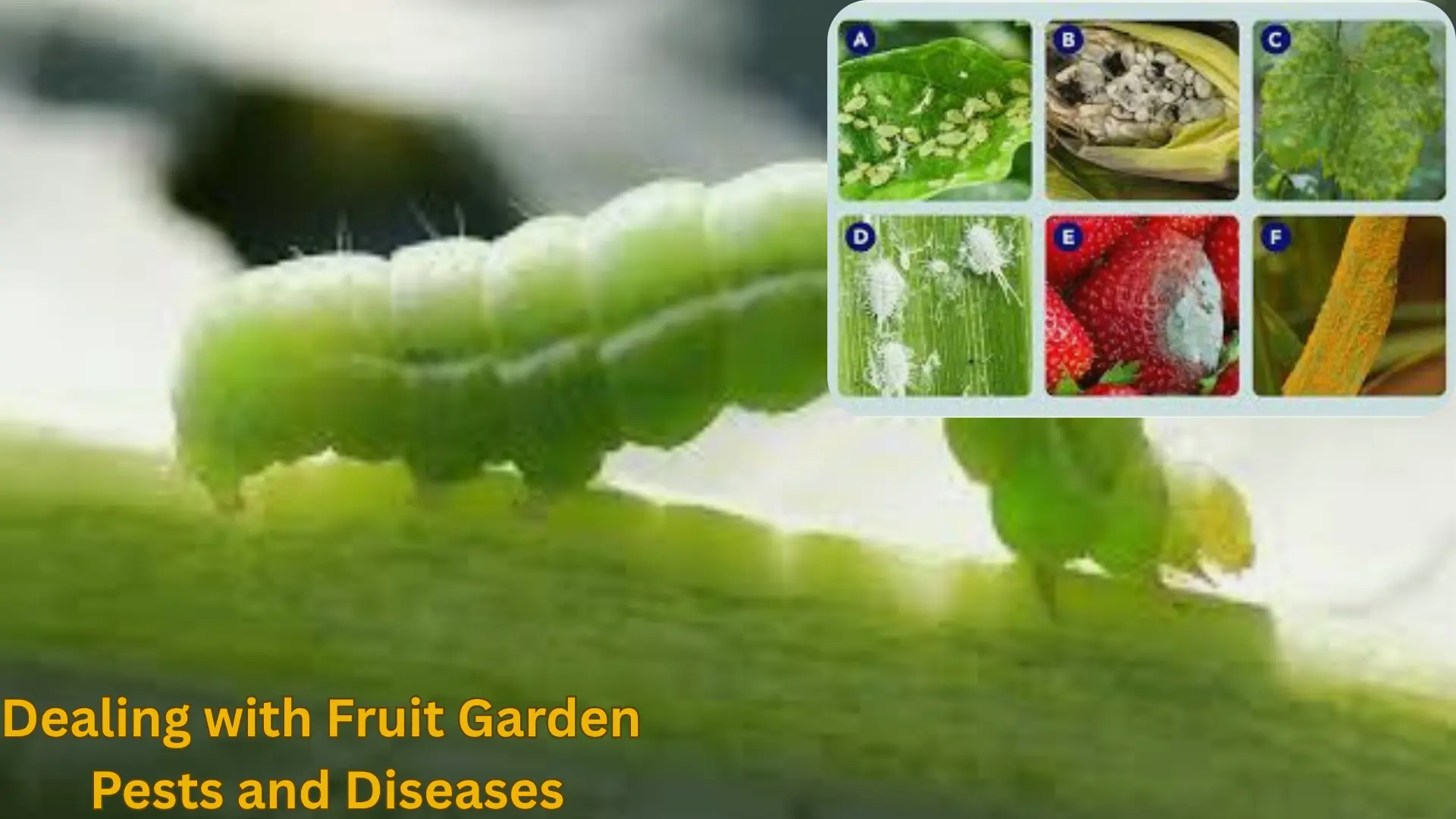
For pest control, consider using organic solutions like neem oil or insecticidal soap. These options are safer for your plants and the environment. To prevent diseases, avoid overhead watering, as wet leaves can encourage mold and mildew. Regularly remove fallen fruit and leaves to reduce the risk of fungal infections.
| Pest | Symptoms | Organic Control | Treatment Cost |
|---|---|---|---|
| Aphids | Yellowing leaves, stunted growth | Neem oil, insecticidal soap | $10 – $20 |
| Powdery Mildew | White, powdery fungal growth on leaves | Baking soda mixture, sulfur spray | $12 – $25 |
| Caterpillars | Holes in leaves, defoliation | Hand-picking, Bacillus thuringiensis | $10 – $20 |
| Leaf Spot Disease | Brown or black spots on leaves | Copper fungicide, prune infected areas | $15 – $30 |
How to Identify and Prevent Common Fruit Tree Pests
Identifying pests early can save your fruit trees from significant damage. Common pests like aphids, spider mites, and caterpillars can be spotted by checking the undersides of leaves and on the tree bark. Signs of pest damage include curled leaves, yellowing, or small holes in the fruit.
To prevent pest problems, consider using natural repellents like garlic spray or neem oil. Regularly prune and clean your trees to remove any affected areas. You can also introduce beneficial insects, such as ladybugs, which eat aphids and other pests, helping to keep your fruit trees healthy.
Organic Ways to Protect Your Fruit Garden from Disease
Protecting your fruit garden from diseases doesn’t have to involve chemicals. Start by choosing disease-resistant plant varieties that are better equipped to handle common infections. Proper spacing between plants helps with air circulation, reducing the risk of fungal diseases like mildew.
You can also use natural remedies, such as compost tea or garlic spray, to prevent disease. Regularly clean up fallen leaves and fruit to reduce the spread of pathogens. Mulching around your plants helps keep soil moisture balanced and protects the roots from disease-causing fungi.
Harvesting Your Fruit – When and How
Knowing when and how to harvest your fruit is key to enjoying its full flavor. Most fruits are ready to harvest when they’ve reached their full color and size. A gentle tug on the fruit can help determine if it’s ready; if it comes off easily, it’s time to pick.

To harvest, use clean, sharp scissors or pruning shears to avoid damaging the plant. For fruits like apples and peaches, it’s best to pick them in the morning when they are cool. Be sure to handle the fruit gently to avoid bruising, and store it in a cool, dry place to maintain its freshness.
| Fruit | Ripening Time | How to Harvest |
|---|---|---|
| Apple | Late summer to fall | Twist gently or use pruning shears |
| Peach | Mid to late summer | Pick when fruit detaches easily from tree |
| Grapes | Late summer to fall | Cut clusters with pruning shears |
| Strawberry | Spring to early summer | Gently pull berries from the stem |
Signs That Your Fruit is Ready to Harvest
Knowing when your fruit is ripe is essential for the best taste and quality. Looking for color changes, ripe fruit typically has its full, vibrant color. For example, apples turn their variety-specific color, and strawberries deepen to bright red when ripe.
Another sign is the fruit’s firmness. It should yield slightly when pressed, but not feel mushy. You can also gently twist or tug the fruit; if it comes off the plant with little effort, it’s ready to harvest. Pay attention to the season too, as fruits like peaches and plums are usually ready when the weather warms up.
Tips for Picking Fruit Without Damaging Your Trees
When harvesting fruit, it’s important to handle your trees gently to avoid damage. Always use clean, sharp tools like pruning shears or scissors to cut the fruit from the tree, rather than pulling it off. This helps prevent harm to branches and reduces the risk of disease.
Support the fruit with one hand while cutting it, ensuring you don’t drop it or cause bruising. Be careful not to tug on branches, as this can weaken the tree. Lastly, avoid stepping on the roots or compacting the soil around the tree when picking, as this can affect its growth.
Storing and Preserving Your Harvest
Proper storage is key to maintaining the freshness of your fruit after harvesting. For fruits like apples, pears, and citrus, keep them in a cool, dry place. A basement or cool room works well, and make sure to check for any rotting fruits that could affect others.
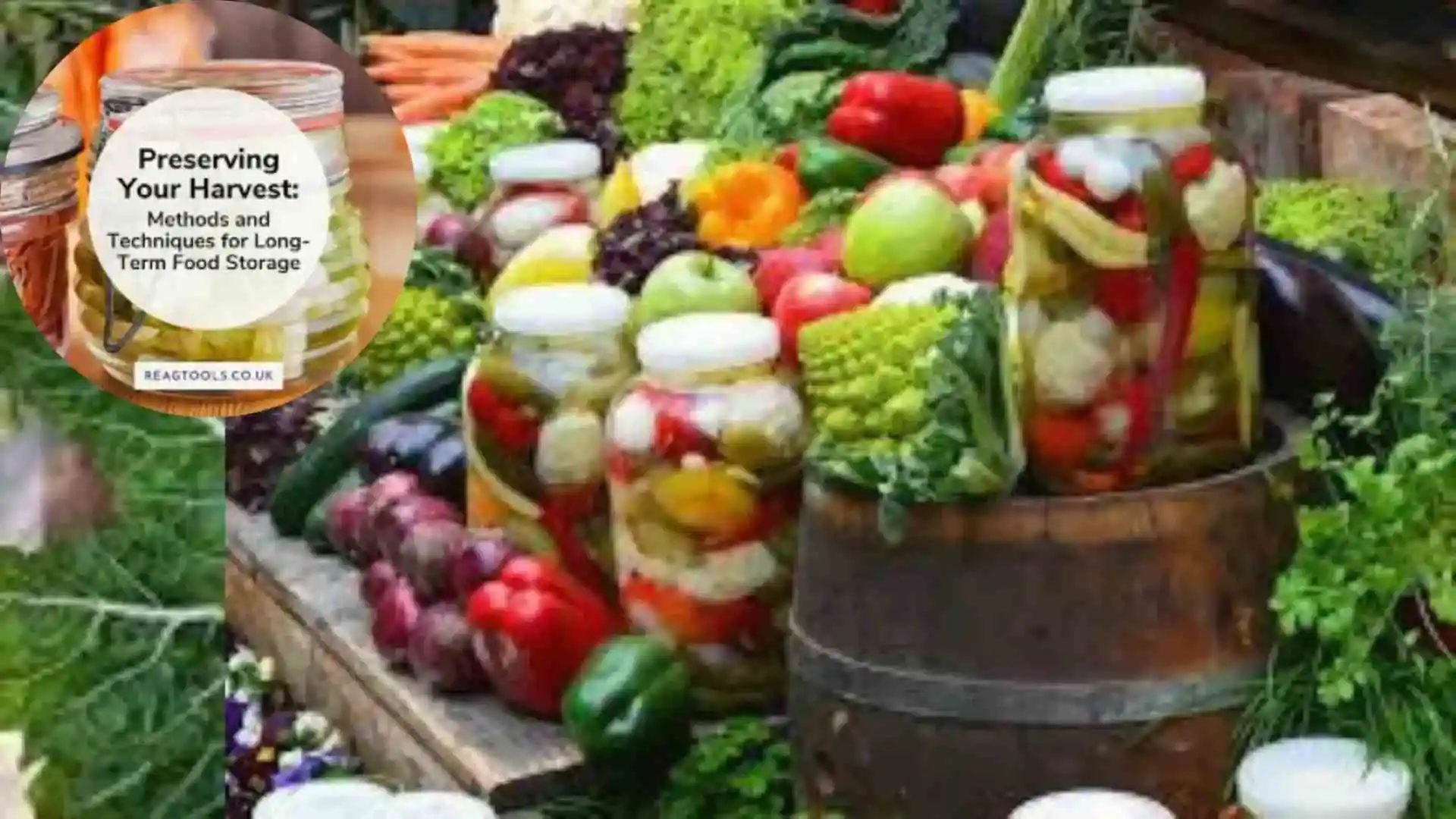
If you have a larger harvest, consider preserving fruits by canning, freezing, or drying them. Freezing fruits like berries and peaches is a great way to extend their shelf life while retaining flavor. Canning is perfect for jams, jellies, and sauces, while drying fruits like apples or apricots can create delicious snacks.
Best Methods to Store Freshly Harvested Fruit
Storing freshly harvested fruit properly helps maintain its quality. For fruits like apples, pears, and citrus, store them in a cool, dry area with good airflow. A temperature between 30-40°F (1-4°C) is ideal for extending freshness.
For fruits like berries or grapes, refrigerating them in shallow containers helps prevent crushing. Avoid washing fruit before storing it, as moisture can lead to mold growth. If you have excess fruit, consider freezing or canning to preserve it for later use, ensuring minimal waste.
How to Make the Most of Your Fruit Harvest (Canning, Drying, and Freezing)
To preserve your fruit harvest, canning, drying, and freezing are excellent options. For canning, prepare fruit jams, jellies, or sauces by sterilizing jars and following proper sealing methods to prevent spoilage. This method can keep your fruits fresh for months.
Drying fruits like apples, pears, or peaches is another great way to preserve them. Use a dehydrator or an oven at a low temperature to remove moisture. Freezing is perfect for berries, grapes, and peaches; simply wash, dry, and store them in freezer bags to enjoy later. These preservation methods help you enjoy your harvest long after the season ends.
Troubleshooting Common Fruit Gardening Problems
Fruit gardening can come with its challenges, but many problems have simple solutions. If your trees aren’t producing fruit, it might be due to improper pollination, lack of sunlight, or nutrient deficiencies. Make sure your trees are in a sunny spot and consider adding a pollinator-friendly plant if needed.
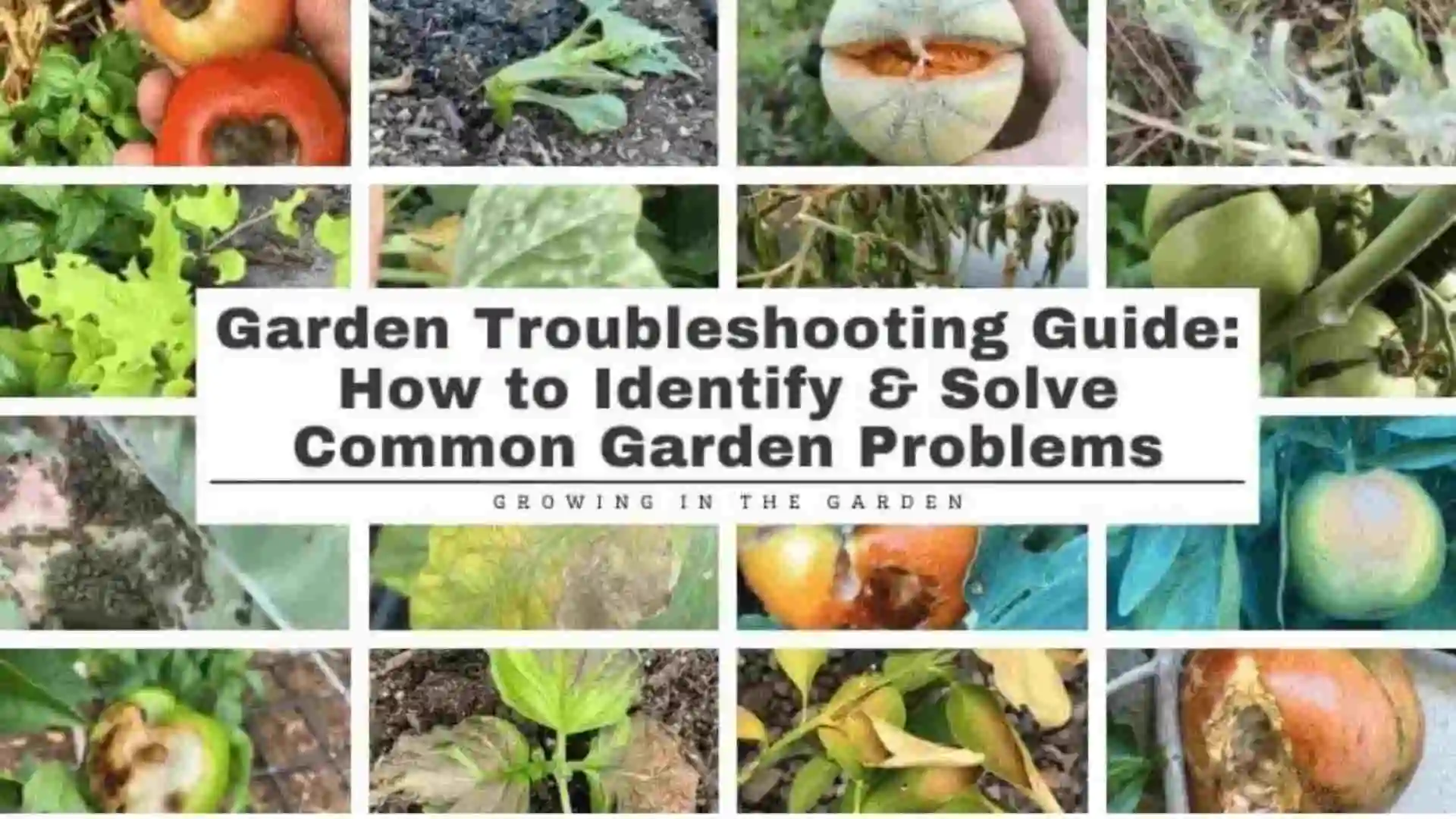
Another common issue is poor fruit quality, such as small or misshapen fruit. This could be caused by overwatering, pests, or inadequate pruning. Regularly check for pests and trim your trees to allow better airflow. By identifying these problems early, you can take the right steps to ensure a healthy, productive fruit garden.
Why Are Your Fruit Trees Not Producing?
If your fruit trees aren’t producing, several factors could be at play. One common reason is inadequate pollination. Many fruit trees require a second tree for pollination, so ensure you have the right variety nearby. Poor soil or nutrient deficiencies can also prevent fruit production, so test your soil and add compost or fertilizers as needed.
Additionally, fruit trees may not produce if they’re too young or stressed. If your tree is still establishing roots, it might not fruit yet. Overwatering, lack of sunlight, or improper pruning can also stress the tree and delay fruiting. Adjusting care for your tree’s needs can help encourage better fruit production.
How to Handle Poor Fruit Quality or Small Yields
If your fruit trees are producing poor-quality or small fruit, the issue could be related to care or environmental factors. One common cause is nutrient imbalance. Make sure your soil has the right amount of nitrogen, phosphorus, and potassium, and consider adding organic compost to improve the soil’s health.
Inadequate watering can also affect fruit size and quality. Ensure your trees are watered deeply, especially during dry periods, but avoid overwatering, which can cause root problems. Another factor could be overcrowding; thinning out excess fruit or pruning branches can help the tree focus its energy on producing fewer, but higher-quality fruits.
Expert Tips for Advanced Fruit Gardening
For advanced fruit gardening, focusing on variety selection and advanced care techniques can make a huge difference. Consider experimenting with grafting or growing rare fruit varieties that thrive in your climate. Grafting allows you to combine the best features of different plants, improving disease resistance and fruit quality.
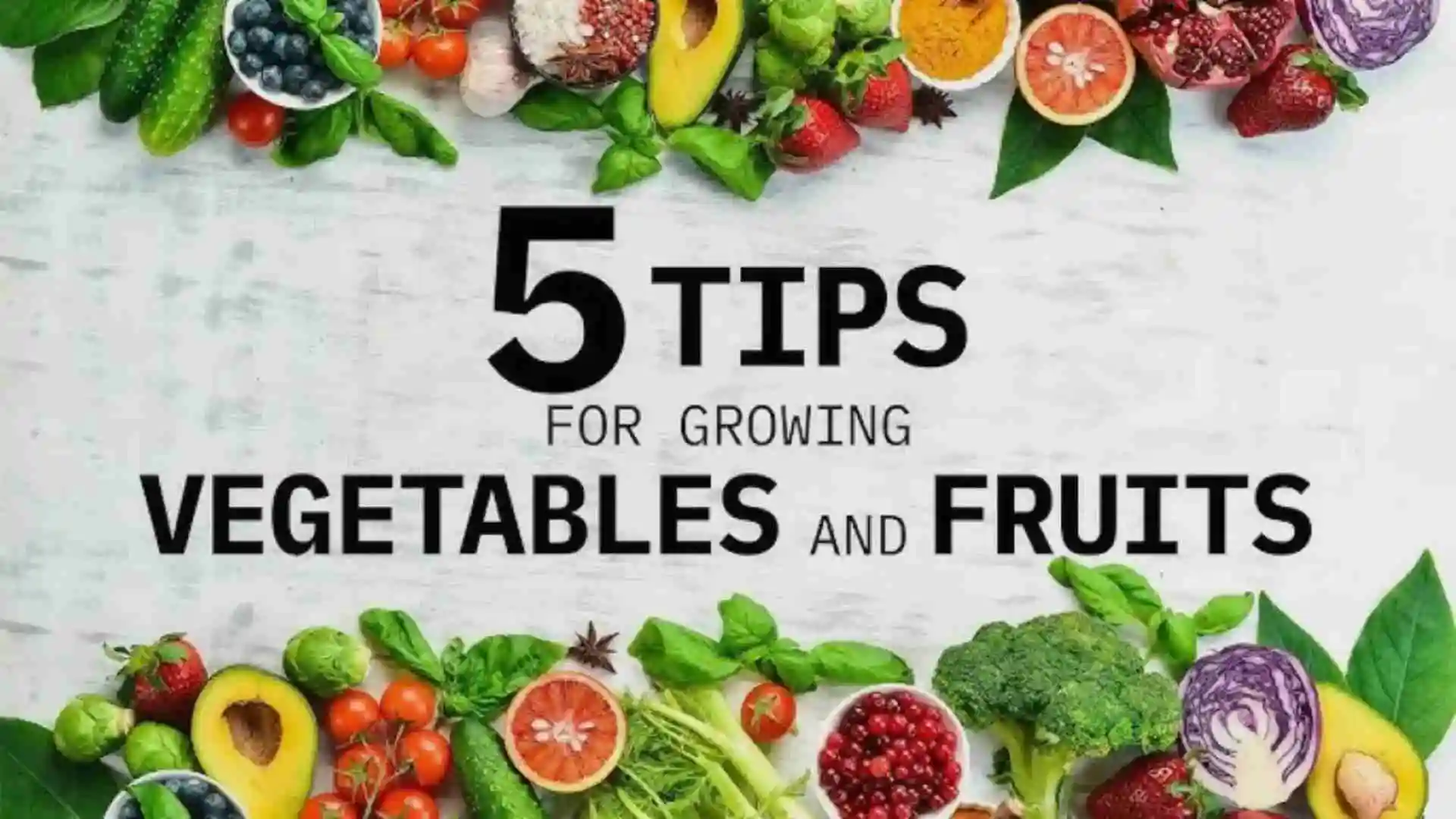
Another expert tip is to implement crop rotation and soil management to keep your garden healthy and productive over the years. Adding organic mulch helps improve soil quality and retain moisture. Additionally, integrating organic pest control methods like encouraging beneficial insects can help keep your garden thriving without harsh chemicals.
| Tip | Why It Works |
|---|---|
| Grafting | Combine varieties for better growth and taste. |
| Crop Rotation | Keeps soil healthy and reduces pests. |
| Drip Irrigation | Saves water and strengthens roots. |
| Pollinator Plants | Attracts bees, boosting fruit production. |
| Climate-Resilient Varieties | Grow fruits that thrive in tough weather. |
How to Grow Exotic Fruits in Your Garden
Growing exotic fruits in your garden can be a rewarding challenge. Start by researching which exotic fruits are suitable for your climate. Fruits like kiwi, pomegranates, and figs can often thrive in warmer areas, while others like citrus may need more care during colder months.
To grow exotic fruits successfully, create the right growing conditions. This might mean providing extra warmth with greenhouses or using containers for easy temperature control. Make sure to use high-quality soil and ensure proper drainage, as many exotic fruits prefer slightly acidic soil. With the right environment and care, you can enjoy unique and flavorful fruits in your own garden.
Conclusion
Starting a fruit garden in 2025 can be both fun and rewarding. With the right tools, knowledge, and care, you can enjoy fresh, healthy fruits right from your garden. From selecting the best fruit varieties for your space to learning the best ways to maintain your plants, gardening offers many benefits.
Growing your own fruits not only improves your health and saves you money but also helps protect the environment. By choosing sustainable practices like organic care and proper irrigation, your garden will thrive for years to come. With patience and attention, your fruit garden will bring joy and delicious rewards.
